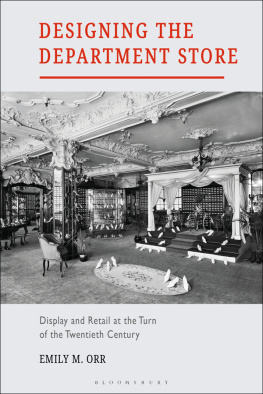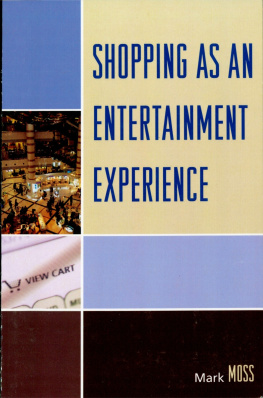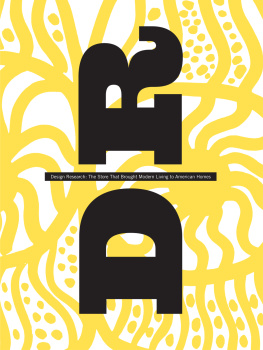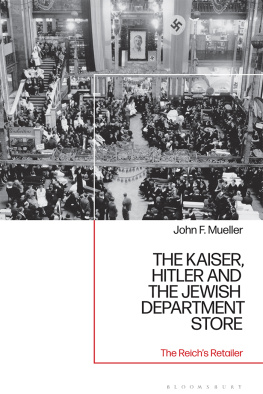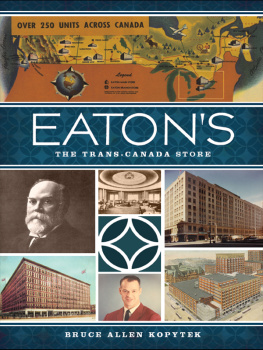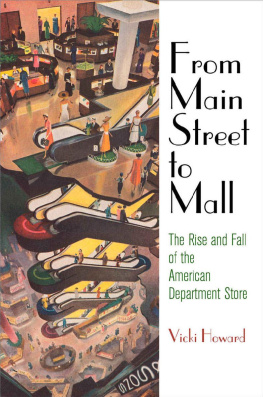
Designing the Department Store
Designing the Department Store
Display and Retail at the Turn of the Twentieth Century
Emily M. Orr

BLOOMSBURY VISUAL ARTS
Bloomsbury Publishing Plc
50 Bedford Square, London, WC1B 3DP, UK
1385 Broadway, New York, NY 10018, USA
BLOOMSBURY, BLOOMSBURY VISUAL ARTS, and the Diana logo are trademarks of Bloomsbury Publishing Plc
First published in Great Britain 2020
Emily M. Orr, 2020
Emily M. Orr has asserted her right under the Copyright, Designs and Patents Act, 1988, to be identified as Author of this work.
For legal purposes the constitute an extension of this copyright page.
Cover design: Louise Dugdale
Cover image Historic England Archive
All rights reserved. No part of this publication may be reproduced or transmitted in any form or by any means, electronic or mechanical, including photocopying, recording, or any information storage or retrieval system, without prior permission in writing from the publishers.
Bloomsbury Publishing Plc does not have any control over, or responsibility for, any third-party websites referred to or in this book. All internet addresses given in this book were correct at the time of going to press. The author and publisher regret any inconvenience caused if addresses have changed or sites have ceased to exist but can accept no responsibility for any such changes.
Every effort has been made to trace copyright holders of images and to obtain their permission for the use of copyright material. The publisher apologizes for any errors or omissions in copyright acknowledgment and would be grateful if notified of any corrections that should be incorporated in future reprints or editions of this book.
Disclaimer: The corporate brands/logos contained in this book are reproduced under the fair dealing and/or fair use defenses/exceptions under English, US, and international copyright laws. In relation to US law, the author and publishers also exercise their rights to publish these logos under the First Amendment to the US Constitution. The author and publishers also rely on the various defenses/exceptions under English, US, and international trademark laws.
A catalogue record for this book is available from the British Library.
A catalog record for this book is available from the Library of Congress.
ISBN: HB: 978-1-3500-5437-0
ePDF: 978-1-3500-5439-4
ePub: 978-1-3500-5438-7
To find out more about our authors and books, visit www.bloomsbury.com and sign up for our newsletters.
CONTENTS
)
)
)
)
)
)
)
)
)
)
)
)
)
)
)
)
Over the course of my graduate study and this subsequent book project, which is based on my PhD thesis, I have pursued research and writing with the financial support of a number of institutions and with the intellectual and moral support of a number of individuals. It is my pleasure to be able to thank them here.
First, thanks are due to my PhD advisors at the Royal College of Art/Victoria & Albert Museum, Dr. Sarah Cheang and Dr. Glenn Adamson, for their exchange of ideas and guidance, genuine engagement with my topic, generosity with their time, and enthusiastic dedication to helping me shape, improve, and complete this project. I am appreciative of the insightful feedback of Professor Penny Sparke and Dr. Victoria Kelley, who served as external examiners for my PhD thesis.
I gratefully acknowledge research and travel funding that both facilitated my access to archives and resources and allowed me the opportunities to share my research in conference programs. The research for this publication has been supported by fellowships from the British Association of Victorian Studies, Hagley Museum and Library, Lemelson Center for the Study of Invention and Innovation, Pasold Research Fund, Royal College of Art Research Student Conference Fund, and Royal Historical Society. Further support for image costs for the book publication has been provided by the Design History Society and the Pasold Research Fund.
I would also like to acknowledge the principal institutions where I received assistance with my research: Beinecke Rare Book & Manuscript Library; Brooklyn Historical Society; Macys Archive; Hagley Museum and Library; Winterthur Museum, Garden and Library; Cooper Hewitt, Smithsonian Design Museum; New York Historical Society; Metropolitan Museum of Art; National Museum of American History Archives Center; Chicago History Museum Archives and Manuscripts Department; Philadelphia Historical Society; Smithsonian Libraries; Archive of Art and Design, Victoria and Albert Museum; British Library; City of Westminster Archives; Harrods Archive; Lambeth Library; Linley Sambourne House; National Art Library; English Heritage Archive (now Historic England); Harris & Sheldon Group Limited; John Lewis Heritage Center; and University of Glasgow Archive Services.
This research has benefitted greatly from conversations with Larry Bird, Mario Carpo, Judith Clark, Christine Guth, and Anca Lasc, who all took an interest in my topic and shared their knowledge. Finally, for unfailing financial and personal support, I am truly grateful to my parents, John and Sally Orr. Heartfelt thanks are also due to my friends and colleagues, and in particular, my sister, Sara, for her continual encouragement.
At Christmas time in about 1894, the department store Abraham Brooklyns most sophisticated department store, Abraham & Straus, upheld this reputation by prioritizing the design of its retail environment since its founding in 1867. This illustrated mailing promoted the investment that the store had made in its original program of display as well as showcased the high quality of its advertisements. The frontal view reveals how the stores faade aimed to impress with its rows of windows, offering enticing merchandise on the ground floor while communicating order and spreading light evenly to the interior on the upper tiers. The gridded frontality of the building conveyed the segmentation that drove the stores architectural design as well as the fragmentation of the stores interior experience. Each window signified the great variety and quantity of wares that the store sold.
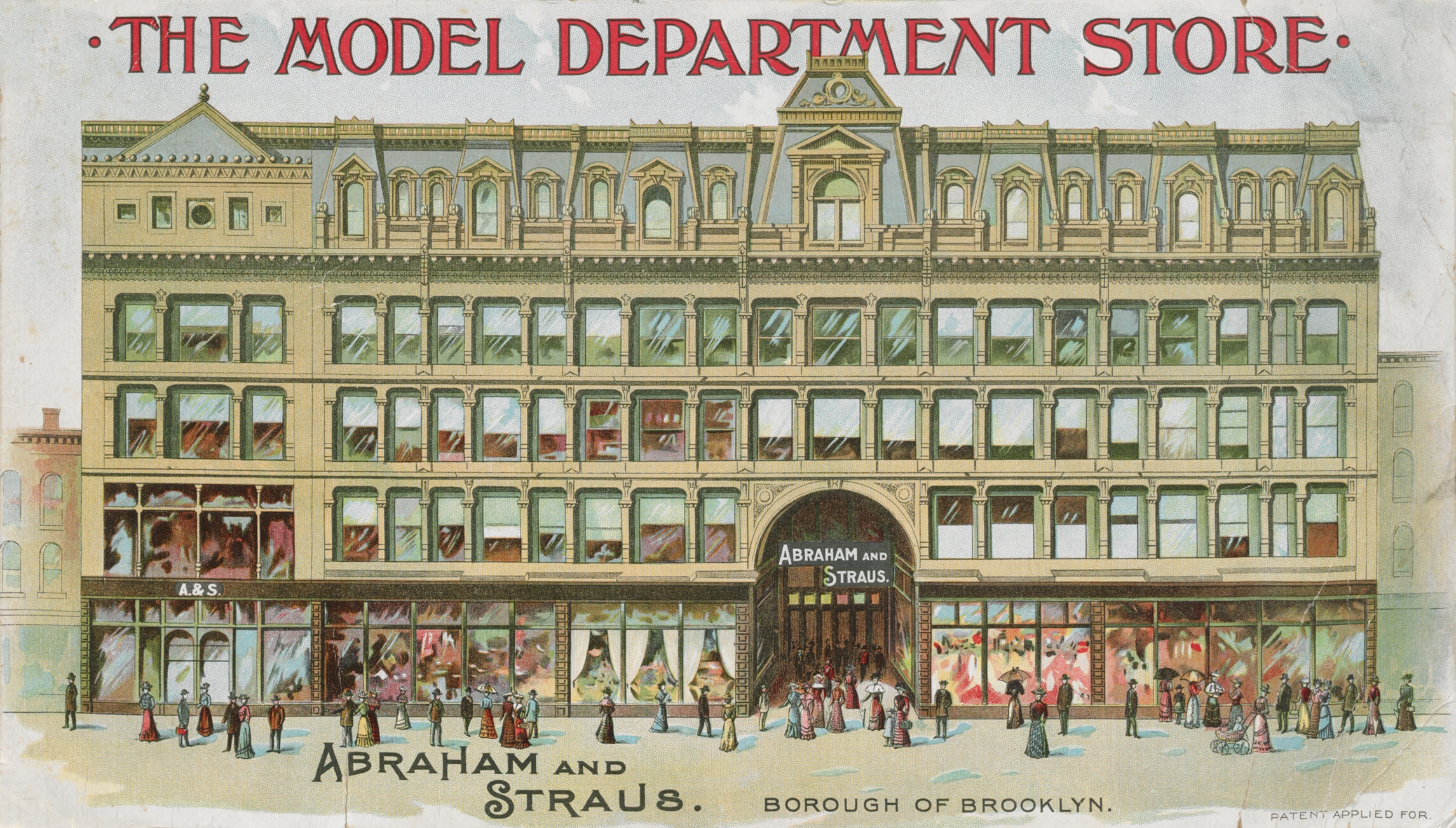
The title The Model Department Store held dual meaning; the mailing itself was indeed a model, a facsimile of the existing store, and at the same time, Abraham & Straus was designating itself as the model, or the paragon, of the modern department store. At the time of this mailings production in 1894, the features of the model department store were being developed and promoted by retail executives, designers, economists, educators, and journalists. All constituents agreed that display, from the grand scale of the architectural faade to the details of the interior arrangements, was central to an outstanding in-store visitor experience and critical to the financial and creative success of the department store itself. This model, valid and celebrated for over one hundred years, is now losing traction. As always, the decline of a long-standing paradigm invites a critical look at the history of its rise.
The Model Department Store metaphorically transported its recipients, potential patrons, into the space of the store and transformed them into consumers ( engagement with the architectural details and commodities on display, encouraging the consumers to employ their powers of imagination to mentally transport themselves into an interior that they could later visit firsthand.
Next page
